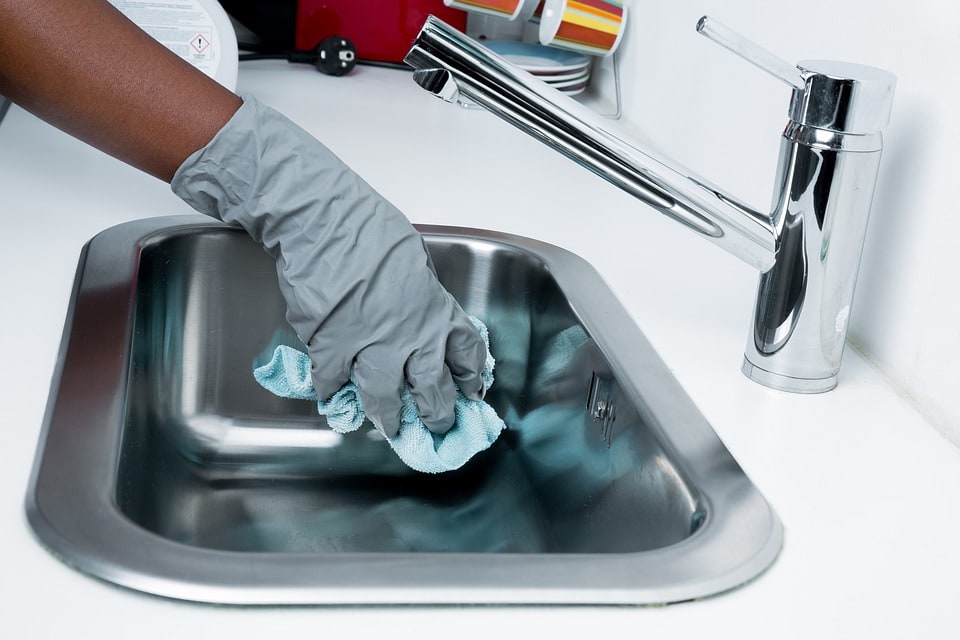While you might think that the bathroom is the dirtiest part of your home, it may actually be your kitchen sink. Faucets and sinks are prime breeding grounds for bacteria thanks to their warm and wet environments. Some of the deadliest bacteria strains, E. coli
Needless to say, keeping your kitchen faucet clean is essential, especially the new touchless kitchen faucets we are in love with! Whether you’re dealing with bacteria or hard mineral deposits, here’s a guide on how to keep your faucet clean and healthy.
Recommended Read: Best Faucet Water Filter
In This Article We'll Discuss
Disinfection
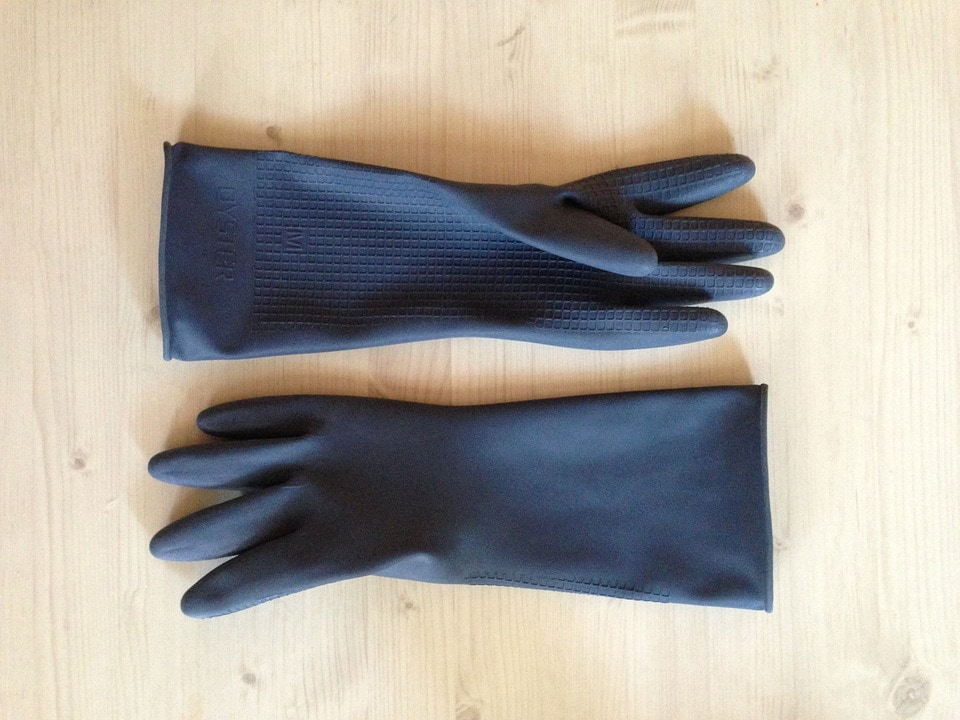
Did you know that your sink and faucet can contain more than 500,000 bacteria per square inchof surface area? Your family touches the faucet regularly, making it easy for disease to spread. To avoid this, it’s recommended that you disinfect and dry your faucet every day.
A high-quality disinfectant can destroy the cell wallof bacteria, effectively killing it. Most store-bought disinfectant sprays will do a decent job at killing most bacteria on faucet surfaces.
However, don’t let marketing buzzwords fool you! Often times, those claims of killing 99.9 percentof germs don’t mean anything. Truth is, the effect disinfectants have on microbes varies.
As a good rule of thumb, stick with disinfectant products that contain chlorine compounds. They’re considered to be effective against most types of microbes.
To clean your faucet, spray the disinfectant over the faucet and wipe it down with a smooth dry cloth. Pay close attention to the handles and underside of the spout. These areas tend to harbor the most germs.
Natural Alternatives
If you’d rather stick with a natural route, you’re in luck. There are several natural ingredients that you can use to disinfect and clean your faucet without harmful chemicals. One of the most effective is hydrogen peroxide.
Use a solution of less than 3 percent. Simply mix about half a cup of hydrogen peroxideto a full cup of water in a spray bottle. You can even throw in some fresh lemon juice or essential oils.
Tea tree oil has antiviral and antiseptic properties. Meanwhile, lemon
If you prefer keeping things natural it’s a good idea to add a good water filter.
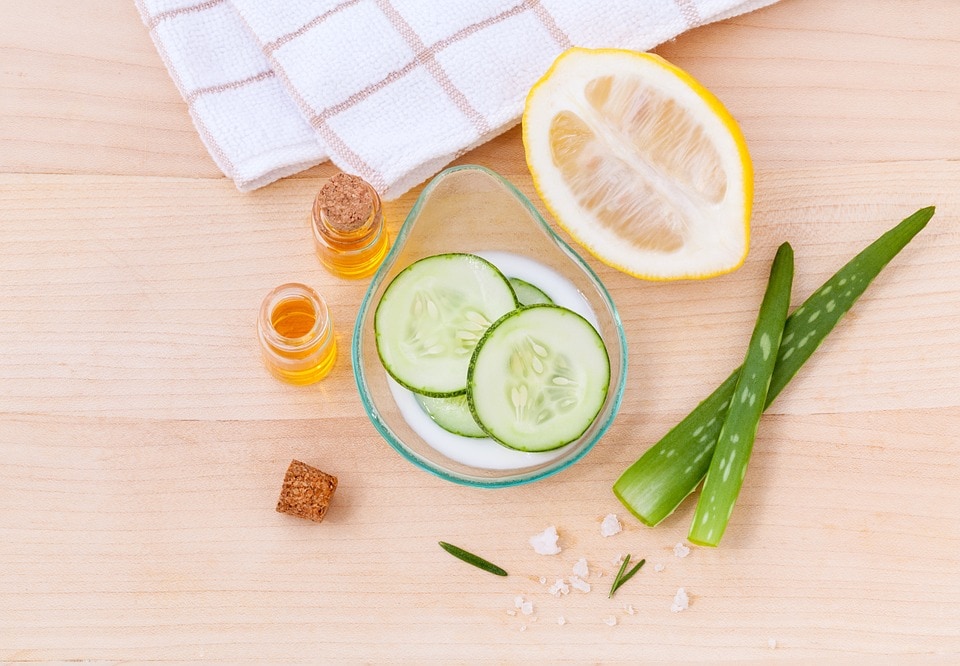
Addressing Hard Water Stains
One of the most common issues that homeowners face is the dreaded hard water stain. These eyesores are characterized by their scaly texture and cloudy color. They can affect your faucet, sink, and any other area that gets into contact with water.
These stains can accumulate, resulting in hard deposits that are difficult to remove. They’re caused by the quality of your water. You see, water contains many dissolved minerals.
Hard water stains are caused a higher concentration of calcium, magnesium, and limestone. These minerals harden when they make contact with smooth surfaces like plumbing. If not removed, the minerals can even cause issues with water flow.
There are a few different ways to tackle hard water stains.
Recommended Read: Best Touchless Kitchen Faucet
Cloudiness on Your Faucet
To get rid of some cloudiness on your faucet, you can use warm water and dish soap or lime-a-way. Use a clean cloth to wipe all the exposed surfaces down. With a dry cloth, buff the faucet clean.
This method is safe on most finishes. It’s a great way to get rid of a thin layer of minerals and restore shine.
Alternatively, you can use lemon. Lemon juice contains mild citric acid. Thus, it’s very effective for removing alkaline limescalemesses.
To clean your faucet, you can juice the lemon and apply it with a soft cloth. Or, you could cut a lemon in half and use it to wipe the surface down. Then, rinse the juice off and dry the metal.
Lemon juice is quite mild compared to stronger acid cleaners. It’s safefor chrome, crass and copper faucets.
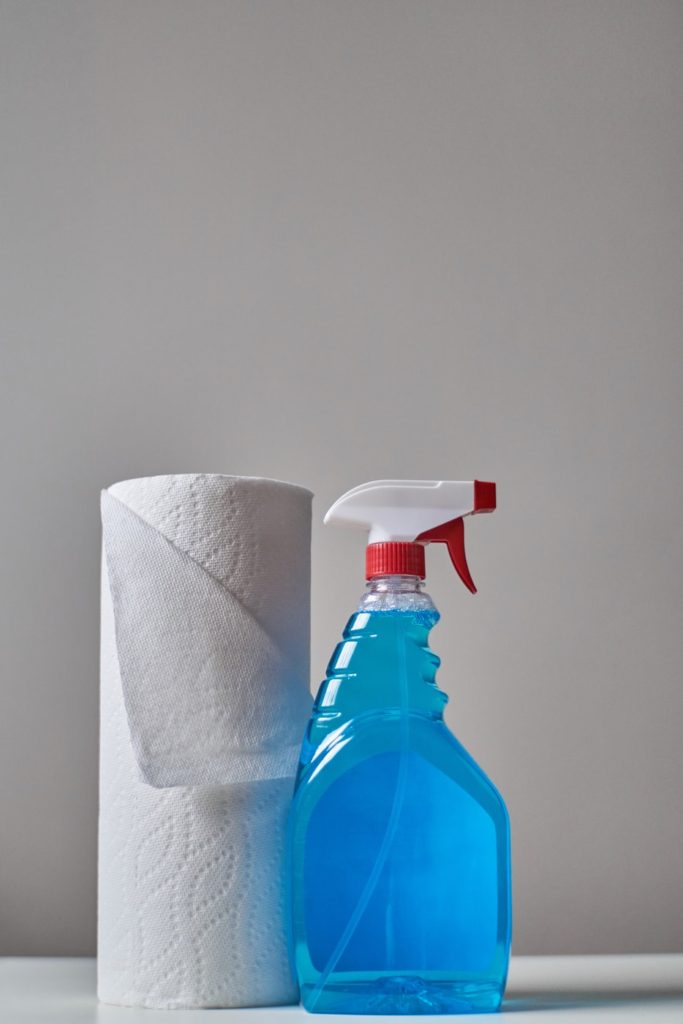
Stubborn Mineral Stains
Stubborn stains will need a cleaning solution that’s a bit more powerful than lemon juice. White vinegar is a great natural option. It contains about 5 percent acetic acid.
It’s strong enough to cut through tough limescale. But, it won’t affect the finishof your faucet. To create a solution, mix equal parts white vinegar and warm water.
Dip a soft cleaning cloth into the solution and polish the surface of your faucet clean. To clean where the faucet meets your sink, use a toothbrush. A soft-bristle toothbrush provides some light abrasion while protecting the finish of your faucet.
Related Read: Standard Kitchen Sink Size & Dimensions – How to Pick One
Cleaning the Faucet Spout
Your faucet handles aren’t the only thing that needs attention. The spout can also become affected by bacteria and limescale. Approximately 8 to 27 gallonsof water flow through your kitchen faucets every day. While you may not be able to look into the spout, there’s a good chance that it’s hiding some nasty surprises.
Contaminants from your water supply can clog your faucet’s aerator. The aeratorreduces the amount of water rushing through your faucet while still giving you the feeling of high pressure. They’re crucial for water conservation.
Unfortunately, the mesh in the aerator is susceptible to clogging. As debris gets stuck, it can affect the taste and smellof your water. If you have hard water, you may also experience some flow issues.
Removing Limescale
There are a couple of different ways to remove limescale from your faucet spout. You can unscrew removable aerators with a few twists. Once you take it off your faucet spout, drop it into a cup of vinegar and let it soak for an hour.
The acid in the vinegar will dissolve the minerals. Vinegar is not a registered disinfectant. However, it does have a light sanitization effect to get rid of odors.
If you can’t remove the aerator, you’ll have to improvise. Grab a plastic sandwich bag and some rubber bands.
Fill the bag with about a cup of vinegar and place the bag over the faucet spout. The end of the spout where the clog is should be submerged. Wrap the rubber bands around the bag to keep it in place.
Let the spout soak for a couple of hours. Then, run the tap and rinse away the vinegar. This trick is also useful for addressing limescale buildup on showerheads.
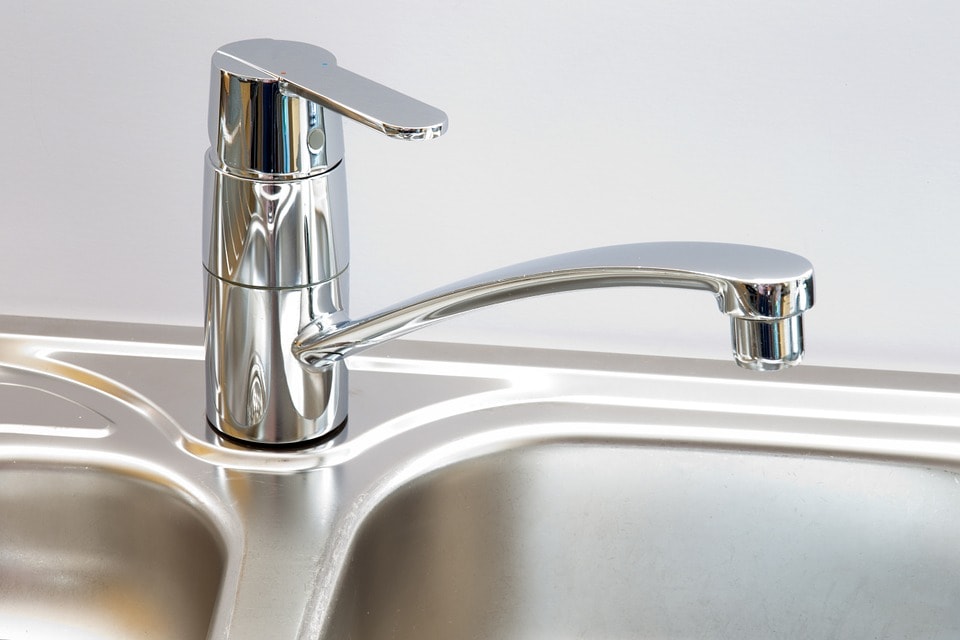
Black Slime
Black slime is another common issue that you may experience. This gelatinous substance can be quite alarming. It collects around faucet spouts and can drip down from the force of water pressure.
The good news is that black slimeisn’t as harmful as it appears. It’s caused by oxidized manganese bacteria. It’s most common in homes that have private wells.
Vinegar can also take care of black slime. The acid in the vinegar can react with the manganese mineral. But, you may have to put some elbow grease into it.
Black slime can be more difficult to get rid of than mineral stains. Consider soaking the spout in vinegar and using a toothbrush to dislodge the gunk.
Cleaning the slime off your faucets is only a temporary fix. While it’s not dangerous, you may want to consider treating the problem at its source to prevent future issues.
Conclusion
Restoring your kitchen faucet’s sparkling shine isn’t difficult. With a few natural materials around your home, you can get rid of stubborn stains, mineral deposits, and clogged spouts.
Kitchen faucets are a great place for bacteria, mold, and harmful viruses to hide. With a regular cleaning and disinfection routine, you can avoid health issues and keep your kitchen looking great.

